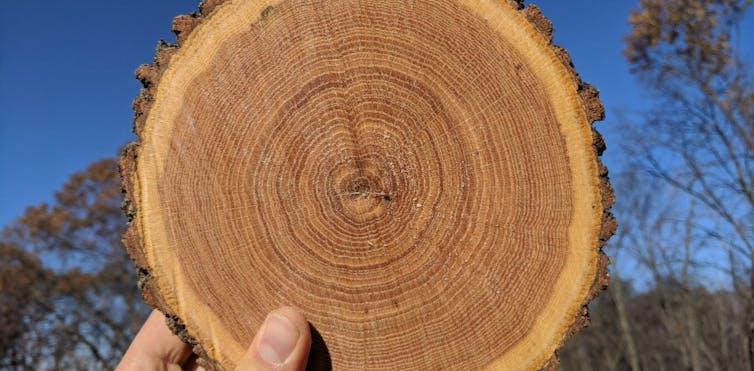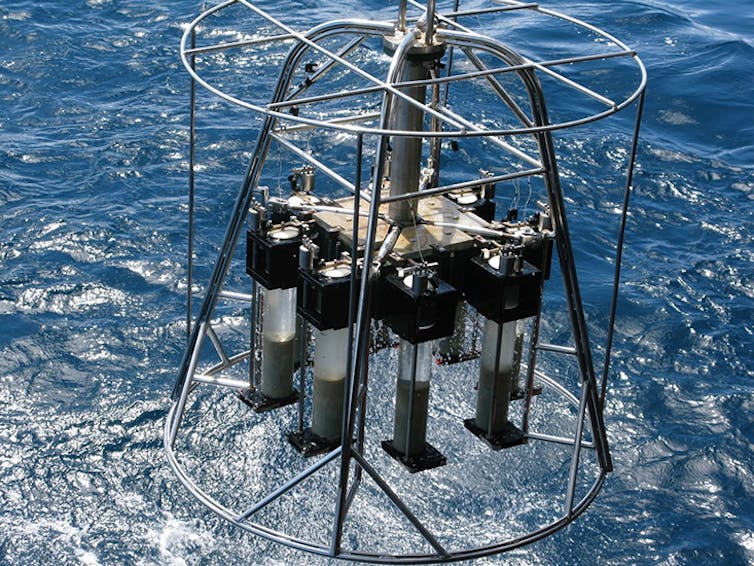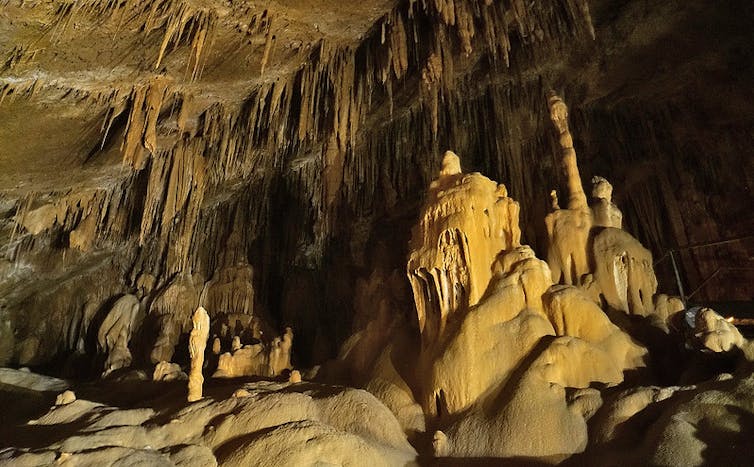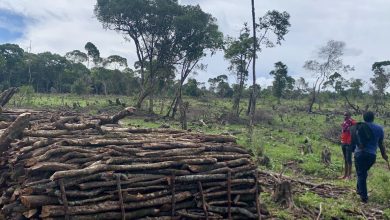How ice, trees, coral and sediments help us reconstruct 2.6 million years of climate history: an introduction to paleoclimatology

مجلة المذنب نت متابعات عالمية:
Today’s climate change is man-made. The consensus in the climate science community is unequivocal, but in order to determine just how exceptional current climate change is, we have had to contextualise the present on a much longer time scale. To do this, scientists working in paleoclimatology (the study of past climate) use information from both natural and documentary sources from around the world.
Climate variability depends on both natural and anthropogenic factors. The former include a wide range of time scales, ranging from millions of years (tectonic movements) to tens of years (solar and volcanic activity). In contrast, anthropogenic factors only occur on a human scale, and much more intensively in the most recent decades of the industrial period.
Since we cannot measure the past climate directly, we have to produce reconstructions. This is done through what are known as proxy-based records: data taken from a range of natural sources that were influenced by the climate of the time. The different sources of climate records are known as archives. In order to be accurate and useful, an archive needs to:
be sensitive to climatic variations, such as changes in temperature or precipitation
be able to record these changes so that they can be interpreted today
be continuous, so that it can cover long periods of time without missing information
maintain a constant relationship between the indicator and climate over time (known as the principle of uniformitarianism)
be representative of the region under study – some archives provide only local information, while others can tell us about a wider region or even the whole planet.
2.6 million years of climate history
The older an archive, the more difficult it is to obtain reliable information from it, partly due to the climate itself, which obscures or erases the signs it left in the past. For this reason, the most studied time period in palaeoclimatology is the Quaternary, which roughly covers the last 2.6 million years up to the present day.
The Quaternary is also the geological period in which the continents, oceans and global atmospheric currents most closely resemble those we know today. This makes it easier for us to interpret and study the climate during this period.
Various natural archives can help us reconstruct the climate throughout the Quaternary, but each has different characteristics. One particularly important factor is what we call an archive’s resolution, meaning how precisely we can date its information. This can range from a particular century or decade to a specific year, or even to a particular season within that year.
You could say that each type of archive is written in a different language, a language that palaeoclimatologists have to decipher.
There are many different types of archives, but here we will look at the most common ones.
Ice cores
The ice found in the Earth’s polar and high mountain areas has accumulated over various glacial cycles during the Quaternary. These successive layers of ice contain very valuable information about very long periods of time, with a resolution of up to one year.
The small air bubbles that get trapped in ice masses when they form are tiny samples of the atmospheric composition at that time. By studying them, we can find out, for instance, how much carbon dioxide was in the atmosphere at a given moment thousands of years ago.
While they can accurately reconstruct long periods of time, these archives are found in very remote and inaccessible areas, and are very delicate, making them costly to preserve and transport.
British Antarctic Survey, CC BY-SA
Coral
Corals form their skeletons through the precipitation of calcium carbonate, which holds information on the temperature conditions of the environment where it formed. Although the time periods that can be reconstructed with these archives are relatively short (generally less than 1,000 years), their resolution can be seasonal. These archives are usually restricted to tropical regions.

U.S. Geological Survey/Flickr
Tree rings
Tree rings are perhaps the most widely used archive in paleoclimatic reconstruction for the last millennium. This is because they are extremely accurate.
Tree ring growth is seasonal, which means we can pinpoint a sample’s age. In addition, these archives are very sensitive to environmental changes, meaning they record climatic variations very clearly. Their temporal continuity and almost global distribution are another reason for their widespread use.

Rbreidbrown/Wikimedia Commons, CC BY-SA
Sea and lake sediments
Sediments – both from seabeds and lakebeds – are excellent paleoclimatic archives. They are found throughout the planet, and hold information on very long periods of time – up to hundreds of thousands of years. In some cases – such as varved sediments, which are left in seasonal layers – they can have a resolution of less than a year.
However, these archives tend to be affected by human activity, meaning the timelines they offer are, though improving, not always completely accurate.

University of South Florida, CC BY-SA
Cave rock formations
Rock formations in caves, known as speleothems, include features like stalactites and stalagmites. These archives provide high-resolution climate records for long periods of time – tens or even hundreds of thousands of years. They also make it possible to reconstruct the climate in a wide variety of hydrologically very different environments, from arid deserts to high rainfall areas.
The dating methods used for these archives are usually very reliable, but often offer incomplete records. In addition, there may be some inconsistency between the surface climate and that recorded inside an underground cave.

Banco de Imágenes Geológicas/Flickr, CC BY-NC-SA
Documentary sources
Historical documents – such as logbooks, parish records or agricultural records of flowering and harvest times – are also useful for reconstructing the climate. What makes these archives interesting is the variety of sources, as well as their clear dating and accuracy. Most of these archives are found around the North Atlantic and Pacific.
A climate jigsaw
Palaeoclimatology’s task is to compare all these different archives with each other to obtain a coherent reconstruction of the past. As we have seen, each of the records has its strengths and weaknesses, but combined into one big climatic jigsaw puzzle they can help us to accurately reconstruct the climate of the past.
Thanks to research in this field, we can confidently say that the speed and characteristics of current climate change differ significantly from other natural climate changes of the Quaternary. In the study of modern climate change, the past has much to tell us.
نشكركم على قراءة المنشور عبر مجلة المذنب نت, المتخصصة في التداول والعملات الرقمية والمشفرة














